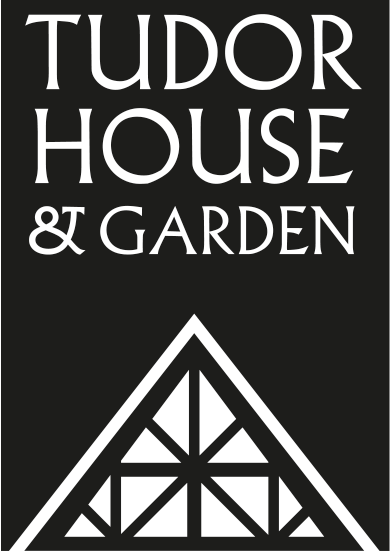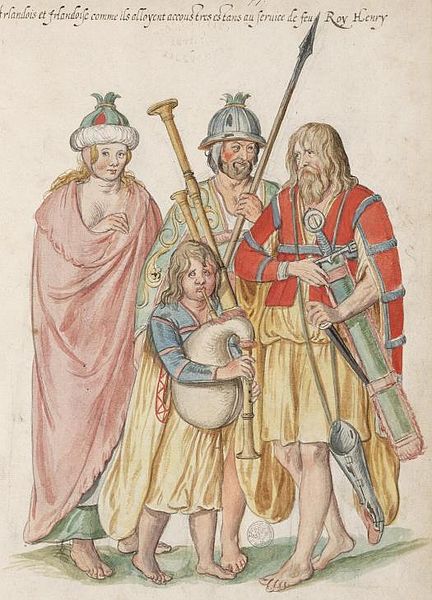In the Tudor period, Ireland wasn’t split into Northern Ireland and the Republic of Ireland – that happened much later!
‘Irish as they stand accoutred being at the service of the late King Henry’ by Lucas de Heere 1575
At the start of the Tudor period Ireland was controlled by Gaelic chieftain families and Norman settlers who had adopted the Gaelic language and customs but the country had largely been ignored by the English monarchs. The monarch’s main influence focused on the area surrounding Dublin, the so-called English Pale, where he had loyal supporters who followed English laws and customs.
The population of 16th century Ireland was estimated at about 1 million. The average life expectancy was just 28, when infant mortality was factored in.
The countryside was either very heavily wooded or covered with bogs. Small areas of the best land were cleared for agriculture, with the staple crop being corn, which had the disadvantage of being difficult to grow and easy to destroy. Cattle were the most important commodity but their meat was only eaten on special occasions, except by the elite. The Irish poor’s normal diet consisted of oatcakes, milk, curds, butter and cheese. Localised famine caused by bad weather were regularly noted in the annals.
In 1541, King Henry VIII took the title “King of Ireland”. Some of the Gaelic chiefs gained inherited titles from King Henry in exchange for promising loyalty to him and obeying English laws. However, many Gaelic chieftains strongly resisted Henry and the other Tudor monarchs and this led to disputes between supporters of the English crown and those who disputed their authority.
Both Queen Mary and Queen Elizabeth I wanted to increase the power of the English monarchy in Ireland. One way of doing this involved sending subjects loyal to the Crown to settle in Ireland and giving them confiscated lands. These lands became known as plantation land as the people were known as having been ‘planted’ on it.
There were two major famines in Ireland in the Tudor period as direct results of war and as a response to increasing control being exercised by the English monarch. Both were caused by the deliberate destruction of crops and foodstuffs as a military tactic during rebellions against English forces and their local allies. The final rebellion of the Tudor period was started by Hugh O’Neill and his supporters. At first the rebellion seemed successful but was severely defeated at the battle of Kinsale in 1601. The rebellion ended in 1603.
Would you have preferred to live in that country or in England? Why?
I suppose it would depend what status and money I had. As a peasant it would have been pretty terrible to live in both England and Ireland but as a noble with wealth life would have been easier.
In Ireland if you were poor life would have been a constant struggle with the added threat from war and rebellion against the English monarch and their supporters. Perhaps life in England would have been more settled politically but not necessarily easier in terms of everyday life.
Is there anything to add?
Culturally, in the monasteries, the Irish had a long tradition of learning and skilled book production. Queen Elizabeth I gave a royal charter in 1592 to the first university in Ireland, Trinity College in an attempt to further the Protestant Reformation in the country. There is also evidence to suggest that trade was beginning to increase significantly during this period between Ireland, England and Europe with goods such as wine, salt, coal, iron and cloth being imported. It must have been exciting, if you could afford it, to suddenly have access to new products.

